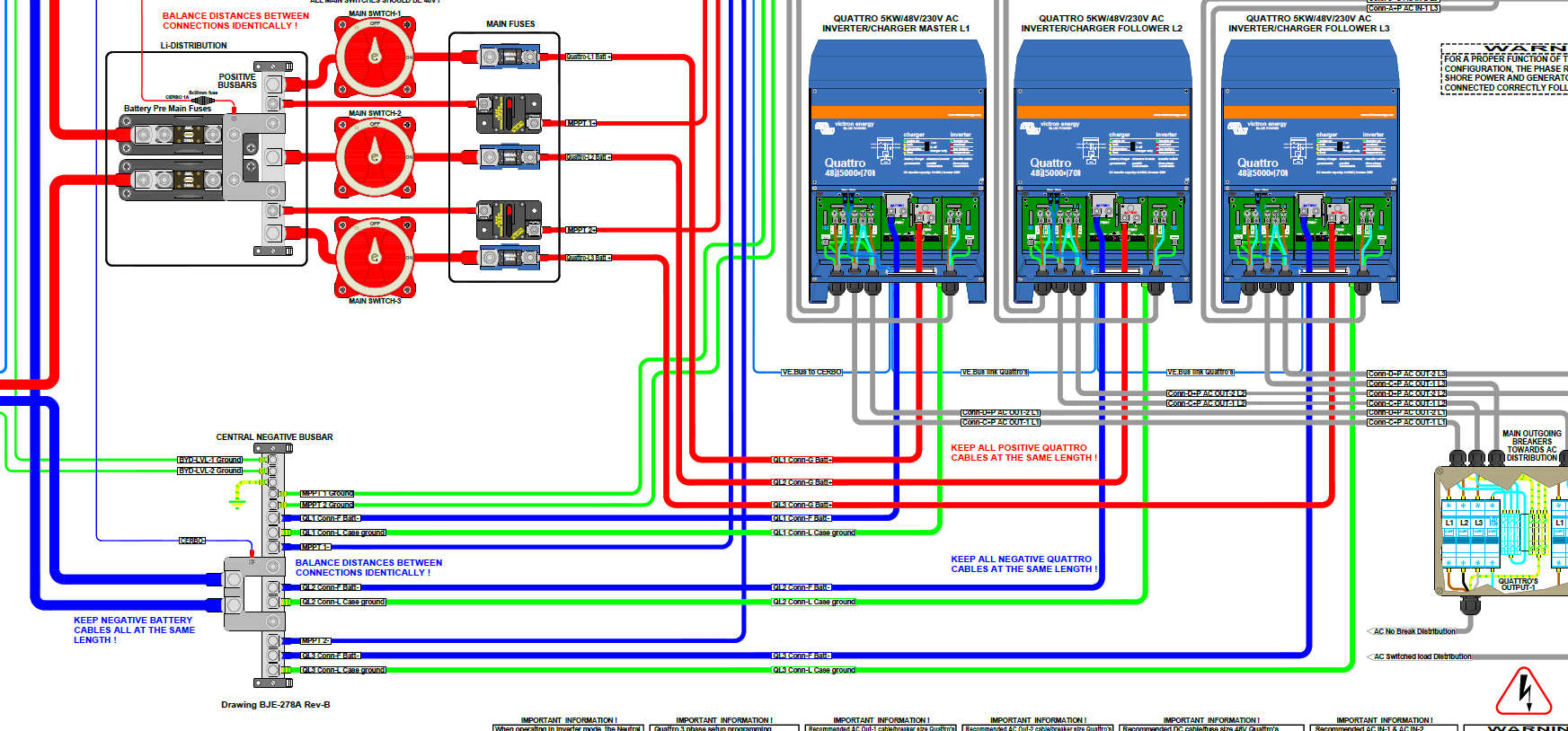Hello,
What is the reason why negative busbar and grounding busbar are common? How can we protect the system against impacts from the soil in this case?

This site is now in read-only archive mode. Please move all discussion, and create a new account at the new Victron Community site.
Hello,
What is the reason why negative busbar and grounding busbar are common? How can we protect the system against impacts from the soil in this case?

Hello,
I can not answer your question perfectly but try to explain what I do know regarding grounding. hopefully @JohnC or @Guy Stewart (Victron Community Manager) could help improving my comments below as well.
As far as I know, we ground all devices to each other and then to Earth Ground to avoid harmful potential voltages between different devices/ metal casings (equipotential bonding right?!)
On the other hand, using a system ground allows you to FUSE only the POSITIVE leads, instead of fuse both sides (Plus and Minus). In case of a faulty situation (where e.g. insulation of a DC Plus and cable connects to a metal casing, the fuse in the Plus wire will blow (as soon enough current flows) and disconnect that device.
If you would NOT have grounded your system (none of the products), and you have 2 devices/ cabling having a faulty situation, eg. making contact to a metal hull (like in a car/boat/ device), it could happen that the current find another way back to minus (via cabling of another device with in worst case lower cross section) without passing your PLUS fuse...! In such a case, your DC cabling is not fully protected!
I attached a sketch which I made in the past for myself, for better understanding (Sorry I do not have the time yet to make it in better quality/ digital, but hope it makes you understand better)
system ground with respect to fusing.png
Another thing is the necessary Ground cable cross section. I believe that you should use in best case, the same cross section as the current-carrying cables itself (please correct me if I am wrong). Then you can assure that in a serious faulty situations, the Plus fuse will blow and you can avoid a melting ´ground´cable, in case your would have chosen a smaller cross section (and is thus not protected by the Plus Fuse in such a fault). A smaller cross section (like 6mm2) might still be sufficient for equipotential bonding, but here I do get confused myself and I look forward for any clarity about this!
As I do also start installing a BYD LVL 15,4 kWh battery and I found out, that BYD suggests using a max. cross section of 16mm2 for the ground cable. Although I do use 2x70mm2; two positive and two negative cables to connect to my DC- Plus and Minus Bus. So my question here is actually why only 16mm2 to connect to BYD Box GROUND?? In other words, how do design the right ground cables for any kind of Victron products (Quatro/ Multi/ MPPT´s ect.)...
BYD Cable cross section suggestions (plus, minus, ground).jpg
(ref. 2020-03-27 Battery Box LVL Operation manual V1.0)
BR,
Ruben
Victron BYD battery compatibility guide
Additional resources still need to be added for this topic
28 People are following this question.